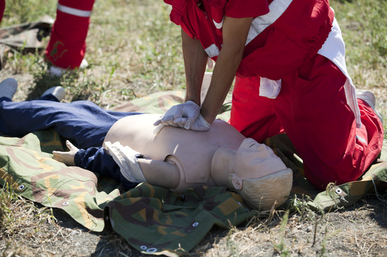Basic Life Support BLS is a type of basic medical assistance that is provided for an individual before reaching an ER or hospital or in the situations whereby medical care of high levels is not available. Paramedics, emergency medical-technicians or any other emergency responders are able to perform BLS as well as individuals who do not have medical training are able to provide this service after attending a course in order to learn about the basics.
The main aim behind Basic Life Support BLS is that while the methods are not always able to save a person it can be used to keep the patient functioning for a period of time before they are able to receive the advanced measures required. The main aim to BLS is to maintain the ABCs, which stands for Airway, Breathing and Circulation. When performing Basic Life Support a responder may use CPR (cardiopulmonary resuscitation) in order to restart a person’s breathing or offer basic treatment for broken limbs, cuts or any other types of issues. The goal revolves around stabilizing a patient and not to offer a lasting treatment.
Drugs or invasive procedures typically do not play a role in BLS. When it comes to BLS training, the students will learn about protocols that need to be followed. This usually includes beginning with securing a scene and then finding out if the person is responsive or not. When a person is unresponsive, the responder needs to follow specific steps in order to attempt to stabilize the patient’s condition. Some of the BLS providers carry a shortcut card that will list these steps in the correct order which will depend on situations with exact directions on airway obstructions, excessive bleeding, hypothermia or other situations.
Medical professionals such as paramedics, nurses and doctors are able to offer BLS as it forms part of the earliest part of their medical training. The first responders on accident scenes or emergency situations such as fire fighters or police officers are also provided with BLS training so that when they are the first to arrive on a scene they can provide this assistance to people in need.
BLS does not serve the purpose of been used solely. When this assistance is provided to a person that medically needs it, the assistance should be followed by calling for emergency services. The person that makes this call must be able to offer the needed information about the condition of the patient and the situation.

